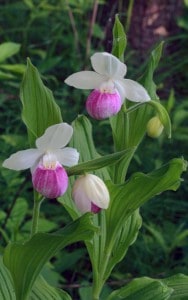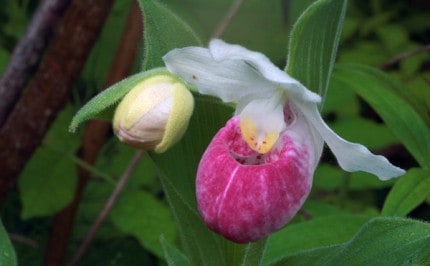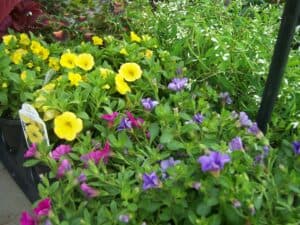

(Chelsea Update would like to thank Tom Hodgson and the Waterloo Natural History Association for the information in this column.)
It is fitting that the scientific species name for the showy lady’s-slipper is reginae, which means queen in Latin as this stately wildflower is certainly fit for a queen.
Growing up to 3-feet tall, it sports the largest blossoms of any native orchid. Showy is an accurate description for the blossoms as each is adorned with bright white petals and a deep red pouch or “slipper.”
In Michigan, lady’s-slipper is confined to wetland habitats where it may grow in the open or partially shaded by trees and shrubs. Though never common, this orchid was once widespread in suitable habitat throughout the mid-western and north eastern U.S. and Canada.
Unfortunately, it is now considered rare or endangered over much of its original range; a victim of habitat loss, collecting, and an expanding deer population.

One of the largest, local populations grows along the marshy borders of Mill Lake near the Mill Lake Outdoor Center.
The blossoms are at their best between June 10 and June 20 in most years. There are no public trails leading to the flowers, so one must park along McClure or Bush Road and walk in. Sturdy hiking boots are recommended as one must slog through a lot of the marsh grass and pucker brush to see them. (For those not up to such an excursion, images of this beautiful wildflower are included with this article.)
And, because this population is located within the WRA park boundaries, it will remain protected for future generations to enjoy. Needless to say, these plants should be left where they are found. They do not transplant well. Picking or removing wildflowers from public lands is strictly prohibited. It takes about 15 years for showy lady’s-slippers to produce blossoms. If left undisturbed, individual plants may survive 50 years in the wild.
Those who ignore the law and pick these rare plants may get their just desserts. The stiff hairs that cover their stems and leaves produce a toxic substance that will produce a poison ivy-like rash that may leave pickers in misery for many days.
That’s another reason to “take only pictures and leave only footprints.”

















